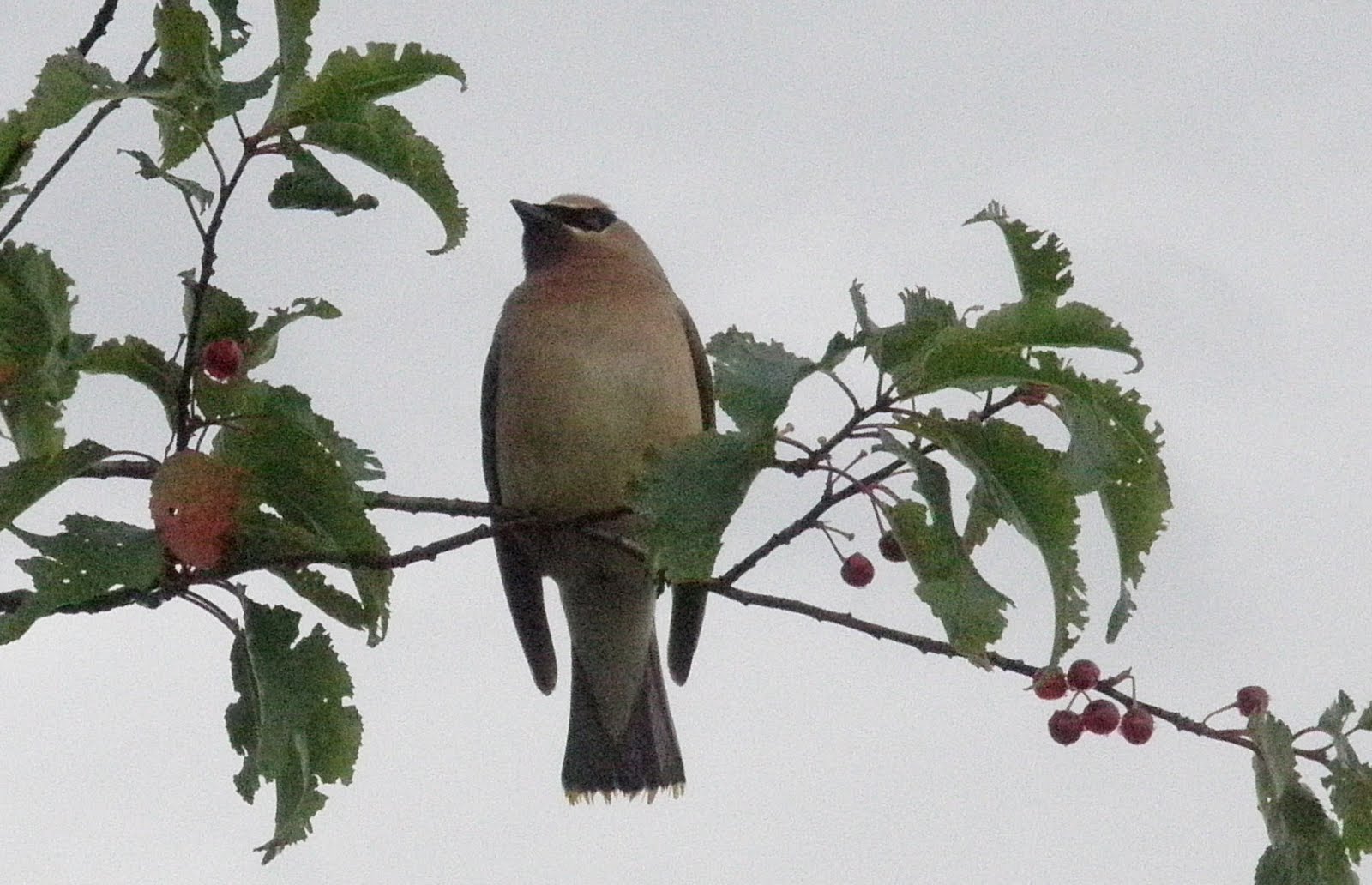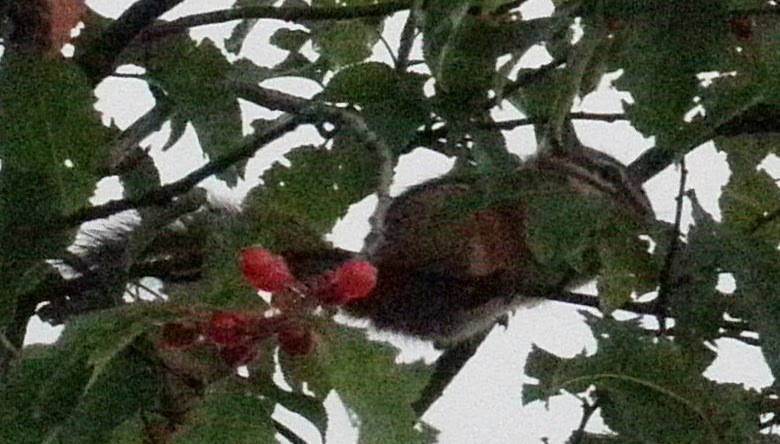
Summer is a busy time for Cedar Waxwings here in northern Minnesota. Much of the summer, you will find these birds on their perfect perch waiting for dinner to pass by. When the 7-inch bird spies its scrumptious meal of mosquitoes or moths, it swoops down, snatches the bugs up, and returns to the same perch to await more unaware passersby. These birds typically eat the abundant bugs of summer, but come mid-July, tasty berries lure them away from their carnivorous ways.
 We found these Cedar Waxwings enjoying quite a meal in the BWCAW from the relatively small (not more than 20 feet high or so), smooth-barked Pin Cherry tree. The Pin Cherries ripen in mid- to late-July, and are bright red and partially translucent with a large pit in the middle. Fortunately for the birds, who are wild about the cherries, the fruit is very sour to our human taste buds. It takes a lot of sugar to make the Pin Cherry taste decent!
We found these Cedar Waxwings enjoying quite a meal in the BWCAW from the relatively small (not more than 20 feet high or so), smooth-barked Pin Cherry tree. The Pin Cherries ripen in mid- to late-July, and are bright red and partially translucent with a large pit in the middle. Fortunately for the birds, who are wild about the cherries, the fruit is very sour to our human taste buds. It takes a lot of sugar to make the Pin Cherry taste decent!

There was one other little guest hiding in the tree. This chipmunk was perched a few feet up in the tree enjoying his own snack of Pin Cherries!


THanks for a lovely "circle of life" post. BTW, did the 1999 Big Blowdown launch a new crop of pin cherries?